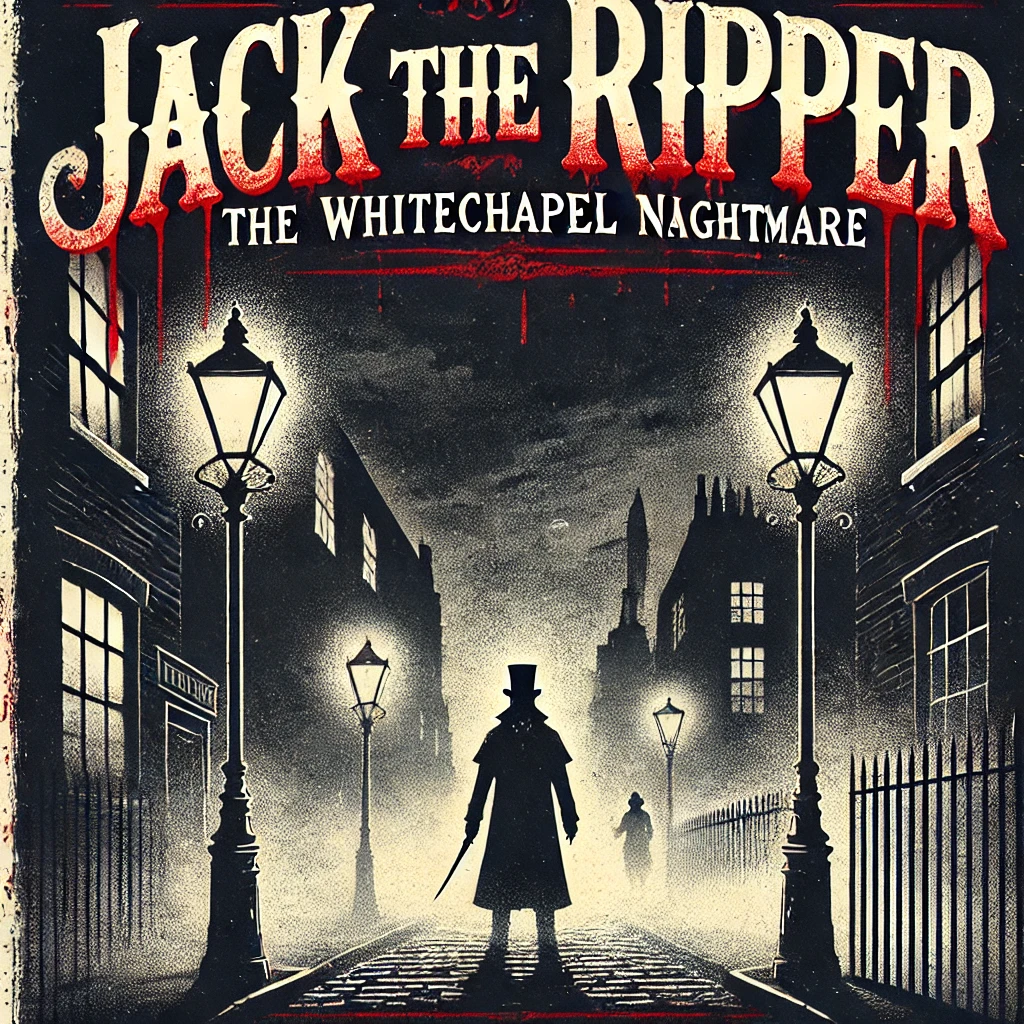The Jack the Ripper Murders: A Chilling Tale of Fear and Mystery (1888, UK)
Few crimes in history have captured the imagination and horror of the public like the Jack the Ripper murders. More than a century later, the name still sends chills down the spine, conjuring images of shadowy alleyways, fog-filled streets, and a faceless killer lurking in the darkness of Victorian London. This is the story of one of history’s most infamous serial killers—a tale of mystery, fear, and gruesome brutality that remains unsolved to this day.
The Backdrop: London in 1888
The year was 1888, and London was a city of contrasts. On one side, it was a thriving hub of industry and wealth, but on the other, it harbored deep poverty, crime, and despair. Nowhere was this divide more visible than in Whitechapel, a slum-ridden district in East London where crime, disease, and prostitution were rampant. This was the perfect hunting ground for a killer—dark alleys, overpopulated streets, and a vulnerable population that few in power cared about.
The police were overwhelmed, the people were frightened, and as the autumn months rolled in, a monster emerged from the shadows.
The Victims: The Women of Whitechapel

The known victims of Jack the Ripper—often called the “Canonical Five”—were all women, all impoverished, and all making ends meet through prostitution or odd jobs. Their names should be remembered not just as victims, but as individuals whose tragic fates became part of one of history’s greatest mysteries:
- Mary Ann “Polly” Nichols (Murdered August 31, 1888)
- Annie Chapman (Murdered September 8, 1888)
- Elizabeth Stride (Murdered September 30, 1888)
- Catherine Eddowes (Murdered September 30, 1888 – same night as Stride)
- Mary Jane Kelly (Murdered November 9, 1888)
These women were killed in brutal ways, their bodies mutilated with surgical precision. But why? Was it a random madman, a doctor with a twisted fascination, or someone with a deeper, darker motive?
The Murders: A Gruesome Pattern

Each killing followed a terrifyingly similar pattern. The Ripper would strike late at night, choosing women who were alone and vulnerable. He would slash their throats swiftly to silence them, then proceed to mutilate their bodies in unspeakable ways. Some victims were disemboweled, others had organs removed, leading some to speculate that the killer had medical knowledge.
Weapons of the Ripper

Though never officially recovered, investigators believed Jack the Ripper used a long, sharp knife—possibly a surgical instrument. The precision with which he removed organs suggested a deep understanding of human anatomy, which fueled theories that he may have been a doctor, butcher, or someone with medical training.
The Investigation: A Desperate Hunt
The Metropolitan Police were under intense pressure to catch the killer. Detectives questioned hundreds of suspects, patrolled the streets, and even disguised themselves to lure out the murderer. But the Ripper was always one step ahead.

The media fueled public hysteria, with newspapers publishing letters allegedly written by the killer. The most famous of these, the “Dear Boss” letter, was signed “Jack the Ripper”, forever cementing the name in history. Another letter, the “From Hell” letter, contained half of a human kidney, allegedly taken from one of the victims.
Despite extensive investigations, the killer was never caught. The streets of Whitechapel remained haunted by the specter of the Ripper long after the murders stopped.
The Suspects: Who Was Jack the Ripper?
Over the years, hundreds of suspects have been named, from doctors to artists, royals to lunatics. Some of the most famous theories include:

- Montague John Druitt – A barrister with alleged mental instability, who died shortly after the murders.
- Aaron Kosminski – A Polish barber with a history of mental illness, thought to have a deep hatred for women.
- Sir William Gull – A royal physician, leading to the conspiracy theory that the murders were part of a cover-up involving the British monarchy.
- James Maybrick – A Liverpool cotton merchant whose supposed diary claimed he was the Ripper.
- Walter Sickert – A famous painter whose artwork depicted disturbing imagery resembling the Ripper’s crimes.
None of these theories have been conclusively proven, and Jack the Ripper’s true identity remains one of history’s greatest mysteries.
The Legacy: A Shadow That Still Lingers
The Jack the Ripper murders changed the world in many ways. They led to advancements in criminal investigation techniques, including fingerprinting and profiling. They also shined a light on the plight of poor women in Victorian London, though change was slow in coming.
Today, Whitechapel is a modern district, but the shadow of the Ripper still lingers. Tours walk visitors through the old murder sites, books and films continue to explore the case, and theorists still debate every detail. The legend of Jack the Ripper has become a symbol of unsolved crime and the dark corners of human nature.
Conclusion: A Mystery That Endures
Who was Jack the Ripper? A doctor? A butcher? A man with a personal vendetta? The truth may never be known. But one thing remains certain—his crimes left an indelible mark on history, forever remembered as one of the darkest chapters in London’s past.
As we remember the victims, we must also remember the lessons of their tragic fates: that justice is not always served, that fear can grip an entire city, and that some mysteries refuse to be buried with time.
Thank you for reading. Stay safe, and never stop seeking the truth.





